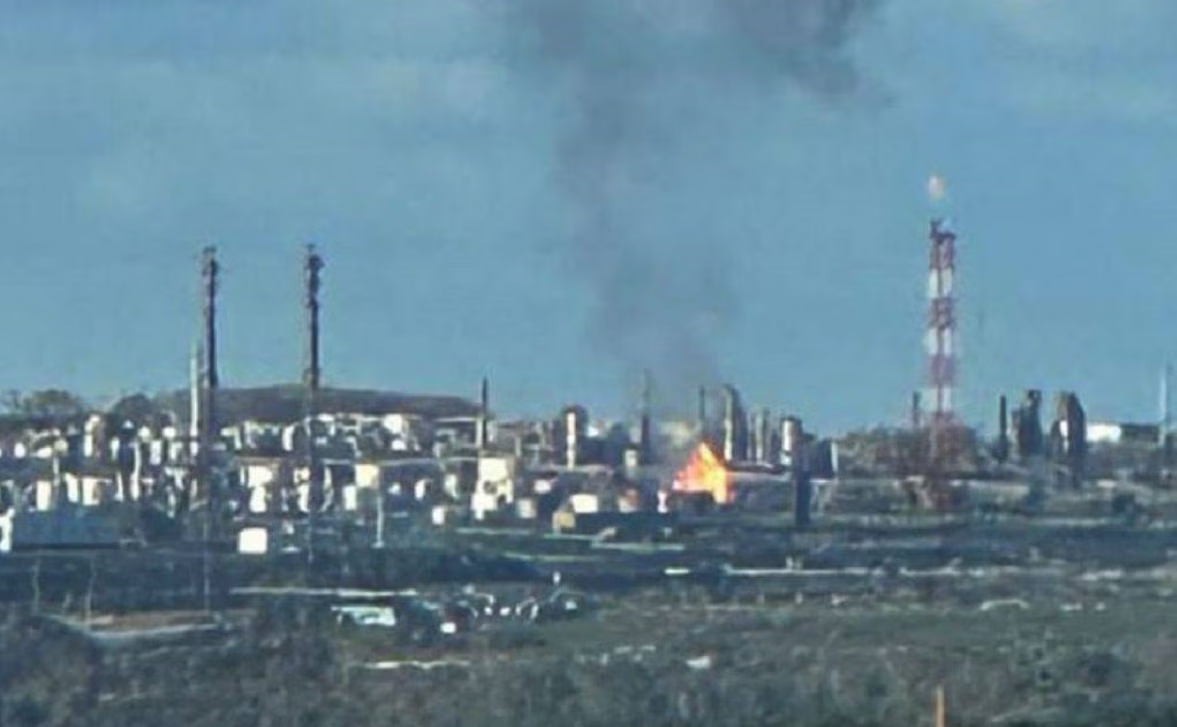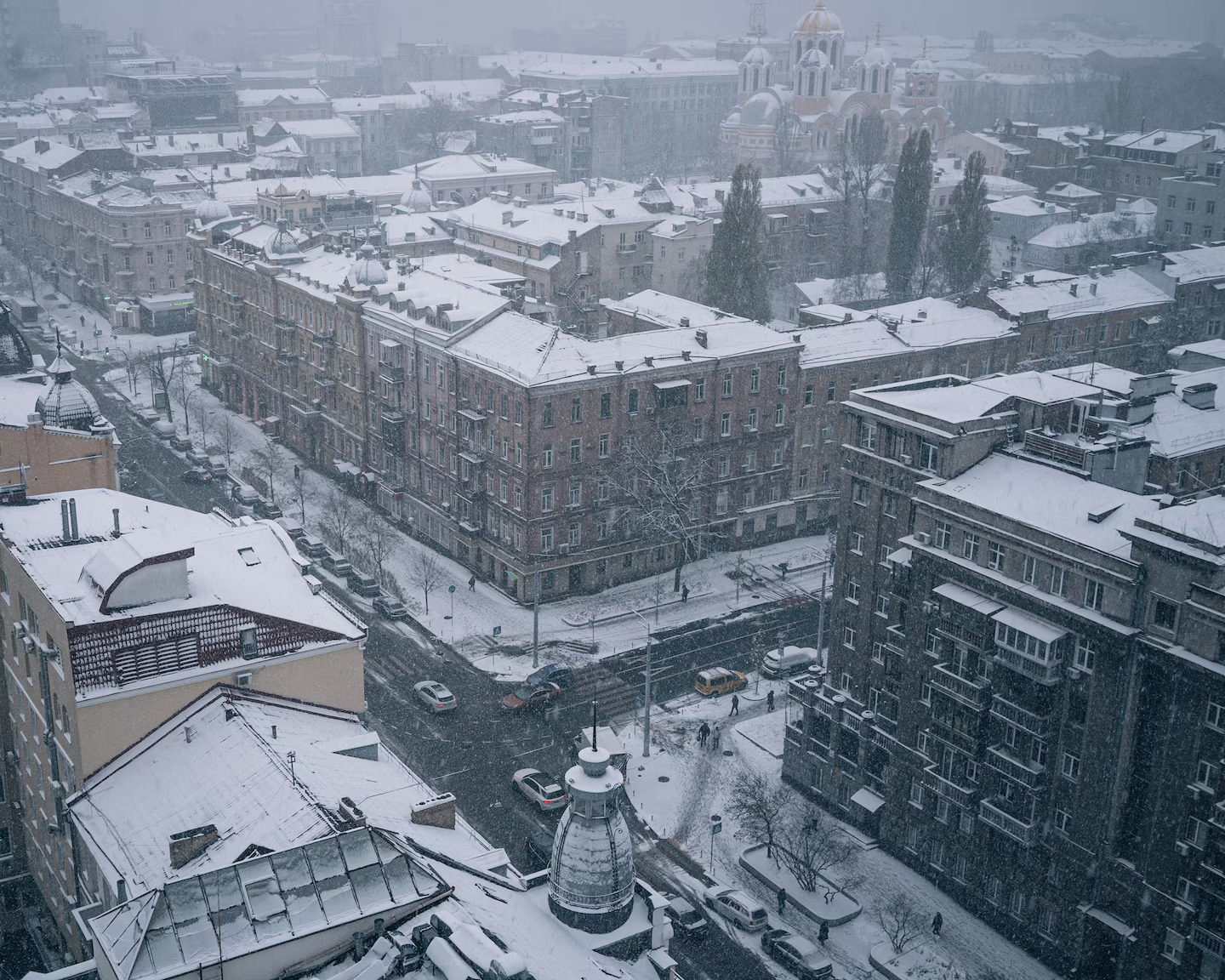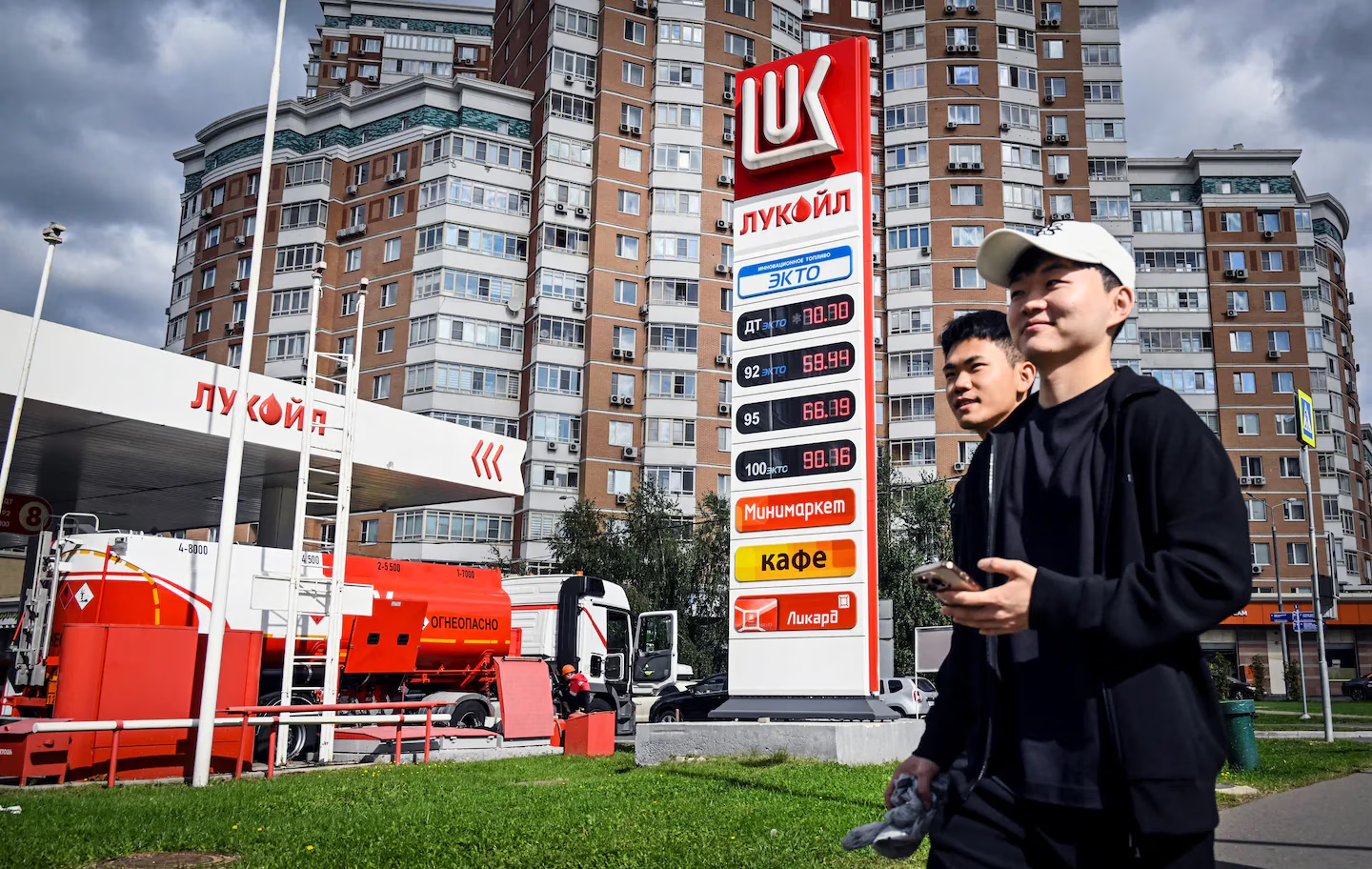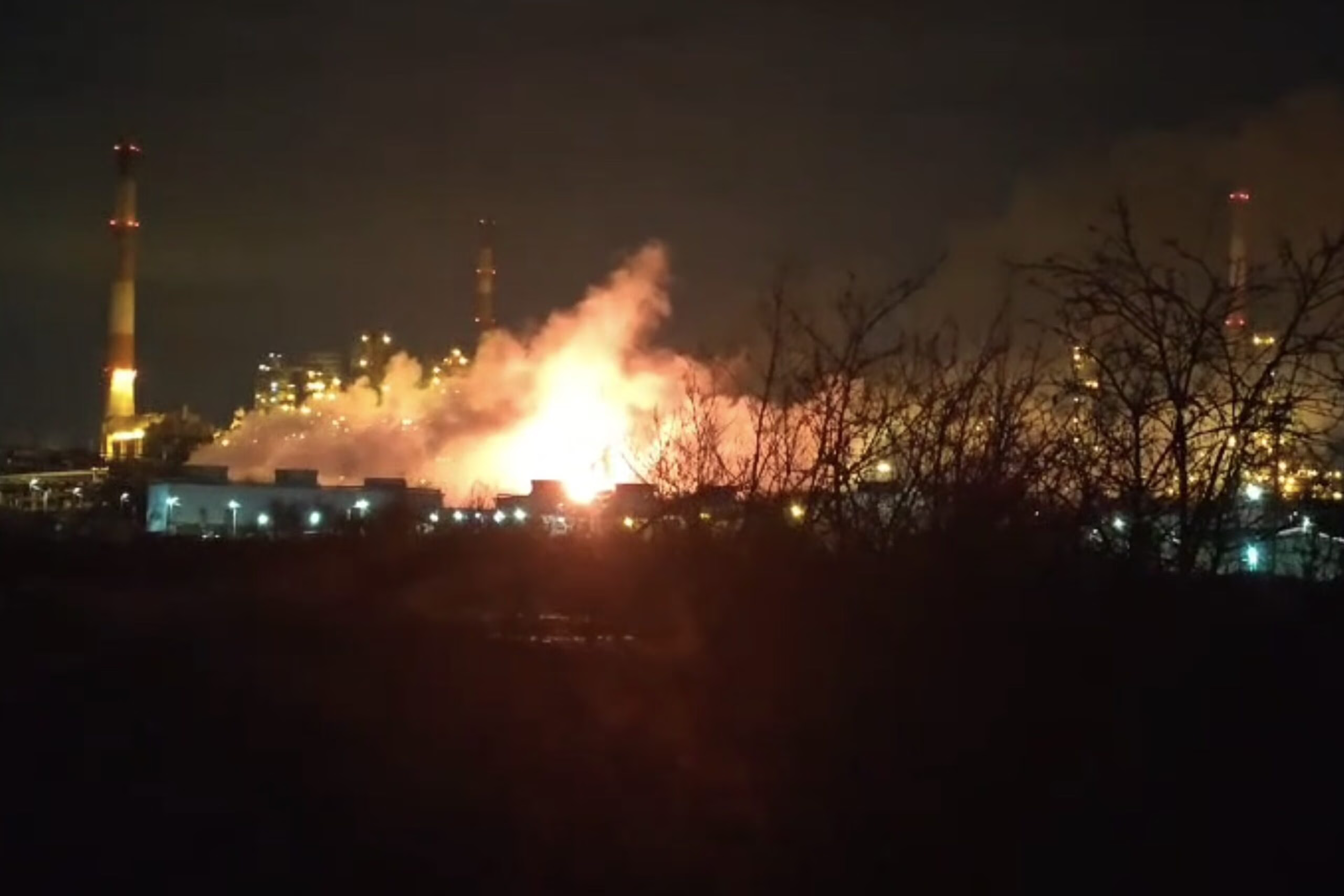Winter is fast approaching in Ukraine, bringing back a familiar fear: renewed Russian strikes on the country’s energy infrastructure could leave millions without light or heat. In recent months, however, Ukrainians have responded with their own large-scale drone attacks on oil and gas facilities inside Russia, which, officials in Kyiv claim, have inflicted significant damage.
Earlier this year, at the initiative of President Donald Trump, Kyiv and Moscow agreed to a month-long “energy truce” from mid-March to mid-April. But that deal now exists only in the archives: both sides are again striking each other’s energy facilities with intensity.
On Thursday, Ukrainian drones struck the Gazprom Neftekhim Salavat oil refining and petrochemical plant in Bashkortostan. According to Ukraine’s Security Service, the strikes hit the central part of the facility, sparking a “large fire.” The regional governor confirmed the attack but said the extent of the damage was still being assessed. That same day, Ukrainian special units reported a strike on one of the largest refineries in Volgograd, claiming the plant had been shut down. No independent confirmation of that claim was available.

A drone crashed on the grounds of a Bashneft facility.
On Saturday, Ukrainian drones struck again—this time targeting refineries in Saratov and Novokuibyshevsk. These attacks were confirmed by both Russia’s Ministry of Defense and local authorities, while residents reported explosions and fires.
Russian forces, with access to what appear to be virtually inexhaustible drone supplies, have intensified their strikes on Ukraine’s power system. Beyond familiar attacks on the electricity grid, officials and experts are increasingly alarmed by the new focus on gas infrastructure—the backbone of the country’s heating system.
Ukrainian officials say gas reserves should last through the winter—especially if it is as mild as last year. They argue that experience from previous Russian air campaigns allows them to maintain both heating and electricity supply. Yet Kyiv acknowledges that sustained barrages could gradually exhaust air defenses and cause such severe damage that large portions of the energy system would be paralyzed. Russia regularly unleashes hundreds of drones and dozens of missiles in overnight assaults.
“Every day they target our facilities—the only question is which ones, and how severe the damage will be,” says Maksym Tymchenko, CEO of Ukraine’s largest private energy company, DTEK.

Kyiv. Winter 2023.
“If the Russians manage to launch 600, 700, 800 drones, then no one will be able to guarantee anything,” he added. “We should all be concerned, but reasonably so. Do not panic, do not claim that everything will be disastrous, but also do not be overly optimistic. Simply do our work, as we have done for three winters in a row.”
Ukrainian authorities say their strikes are hitting Russia’s refining industry with growing force. In addition to the attacks on plants in Bashkortostan and Volgograd, they report that on September 16 drones struck the Saratov refinery, which produces more than 20 types of petroleum products. This followed earlier strikes on facilities near St. Petersburg and Ufa the previous weekend.
“The most effective sanctions—the ones that work fastest—are the fires at Russian refineries, terminals, and fuel depots,” President Volodymyr Zelensky said in his evening address on September 14. He noted that the September 12 strike on an oil terminal in Primorsk on the Baltic had caused “substantial damage” felt “by the enemy.” Kyiv’s assessments of the scale of the destruction have not yet been independently confirmed.
On Tuesday, Reuters, citing industry representatives, reported that the Russian monopoly Transneft had warned producers of possible output cuts due to the attacks. The company immediately denied the claim.
Official Moscow insists that Ukrainian strikes have no impact on the functioning of the oil and gas sector. In August, Kremlin spokesman Dmitry Peskov assured that the fuel market was “stable, the situation under control.” Sergei Vakulenko, an expert at the Carnegie Russia Eurasia Center, noted that the Reuters report could be accurate, but assessing the overall damage is difficult because facilities are under constant repair. “The question is whether the Ukrainians can sustain the pace, scale, and intensity of their attacks. If they can, and Russia fails to strengthen its air defenses, the balance could shift against it,” he said.
According to Mykhailo Honchar, president of the Kyiv-based Center for Global Studies Strategy XXI, gasoline prices in Russia have risen by more than 20 percent compared to last year. “We are seeing the emergence of a fuel crisis in Russia, and it is not ending,” he said. “The holidays are over, the farmers have harvested, yet the crisis continues. So yes, [these strikes] are effective and they have an impact.”

Since August, retail gasoline prices have risen faster than overall inflation, reaching a record high on September 8, 2025.
The Washington-based Institute for the Study of War said on Tuesday that Ukrainian strikes on Russian energy infrastructure, “particularly on oil refineries,” are undermining “Russia’s ability to finance the war in Ukraine and worsening the chronic gasoline shortage inside Russia and in the occupied territories.”
Earlier this month, President Vladimir Putin explained that Moscow’s strikes—long a part of the conflict—are a response to Ukrainian attacks on Russian energy facilities. “We endured for a very long time while Ukrainian forces kept striking our energy facilities,” he said on the sidelines of World War II Victory Day celebrations in Beijing. “After that, we began launching retaliatory strikes. And of course, we are responding seriously.”
В среду после ночной атаки дронов в Кировоградской области Украины временно было обесточено 45 населенных пунктов. Ранее в этом месяце 19 российских беспилотников ударили по Трипольской ТЭС под Киевом. Эта станция уже пережила серьезные разрушения в апреле 2024 года и находилась в стадии восстановления. По словам члена парламентского энергетического комитета Сергея Нагорняка, новый удар «накануне зимы» сделал восстановительные работы «напрасными».
Наиболее уязвимой частью всей энергетической системы Украины остается газовая инфраструктура, отмечает бывший секретарь парламентского комитета по энергетике Виктория Войцицкая. Сложность в том, пояснила она, что система состоит из нескольких этапов — добычи, переработки, хранения и распределения — и все они рассредоточены по стране и плохо защищены. Так, существуют тысячи газораспределительных станций, которые обеспечивают газом города и поселки. «Если ударить по ним, а россиянам это уже удавалось, можно легко вызвать перебои и отключения в городах, селах и деревнях, — сказала она. — А создать защиту для таких объектов стоит миллиарды долларов, требует огромных ресурсов и времени, которых у нас нет. Мы к этому не готовы».
Serhiy Koretsky, CEO of the state-owned oil and gas company Naftogaz, told The Washington Post that Russian strikes on Ukraine’s energy infrastructure began to intensify in February and within two months knocked out about 42 percent of daily gas production. In the summer, he said, “oil refining was completely destroyed.” Some capacity has since been restored, but the company is preparing for a new wave of attacks.
“Most likely, Russia will now launch massive strikes on energy facilities ahead of the heating season and throughout the winter,” he noted. “This is terrorism in its purest form.” Koretsky believes the attacks on gas infrastructure were Moscow’s response to the termination of Russian gas transit through Ukrainian territory on January 1, after the expiration of long-term contracts. As a result, Ukraine has been forced to import nearly 6 billion cubic meters of gas—a record volume in the country’s history.
According to Koretsky, Ukraine has already secured agreements covering about 95 percent of the country’s gas needs by the time centralized heating begins on November 1. To finance the purchases, Naftogaz allocated $1 billion of its own funds, while the European Bank for Reconstruction and Development, the Norwegian government, and other international institutions provided another $1.5 billion. This will suffice if the winter is mild, but not if severe cold sets in, warns Mykhailo Honchar of the Center for Global Studies Strategy XXI. “Because no one knows. Will the winter be warm or harsh?” he said.
